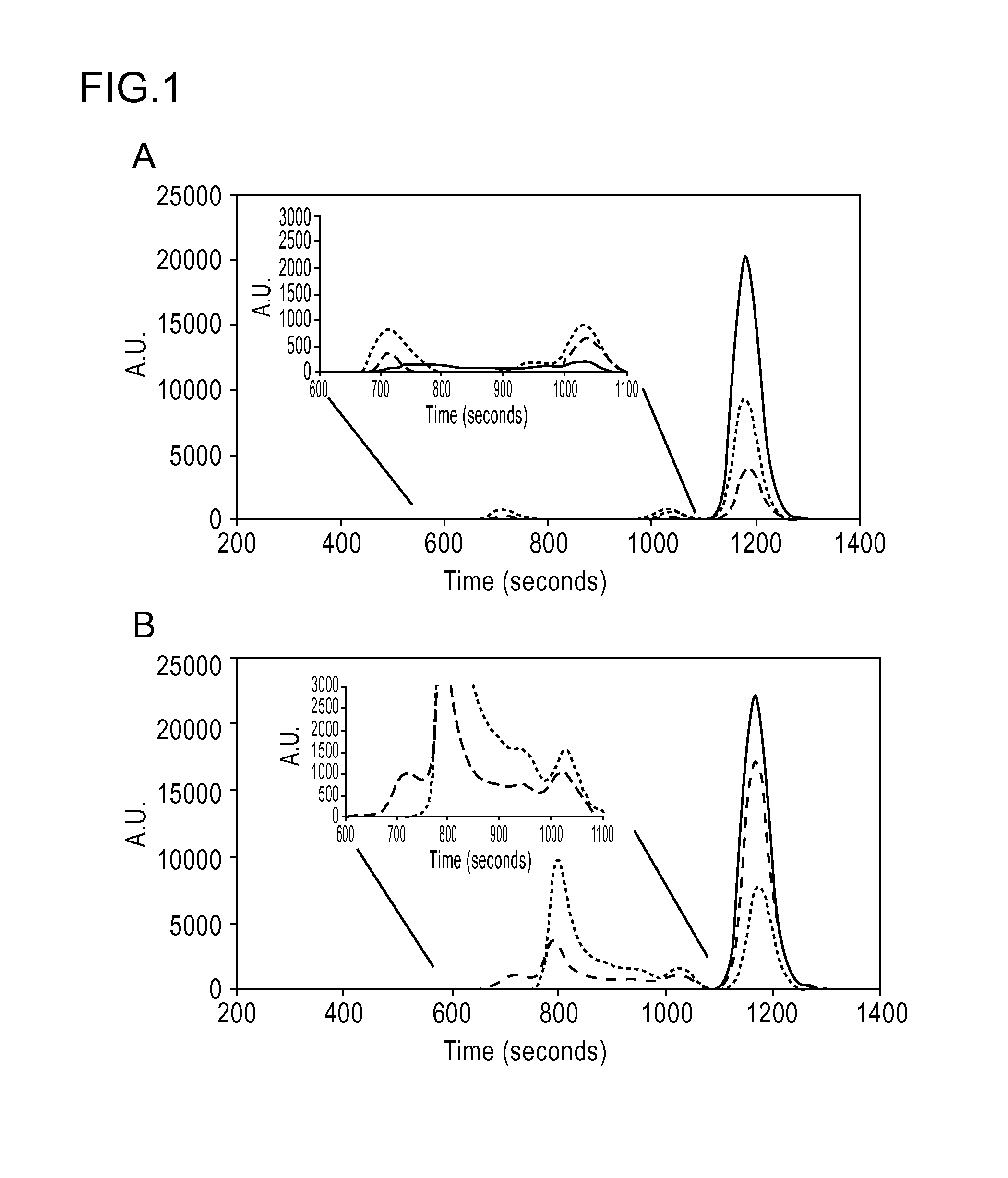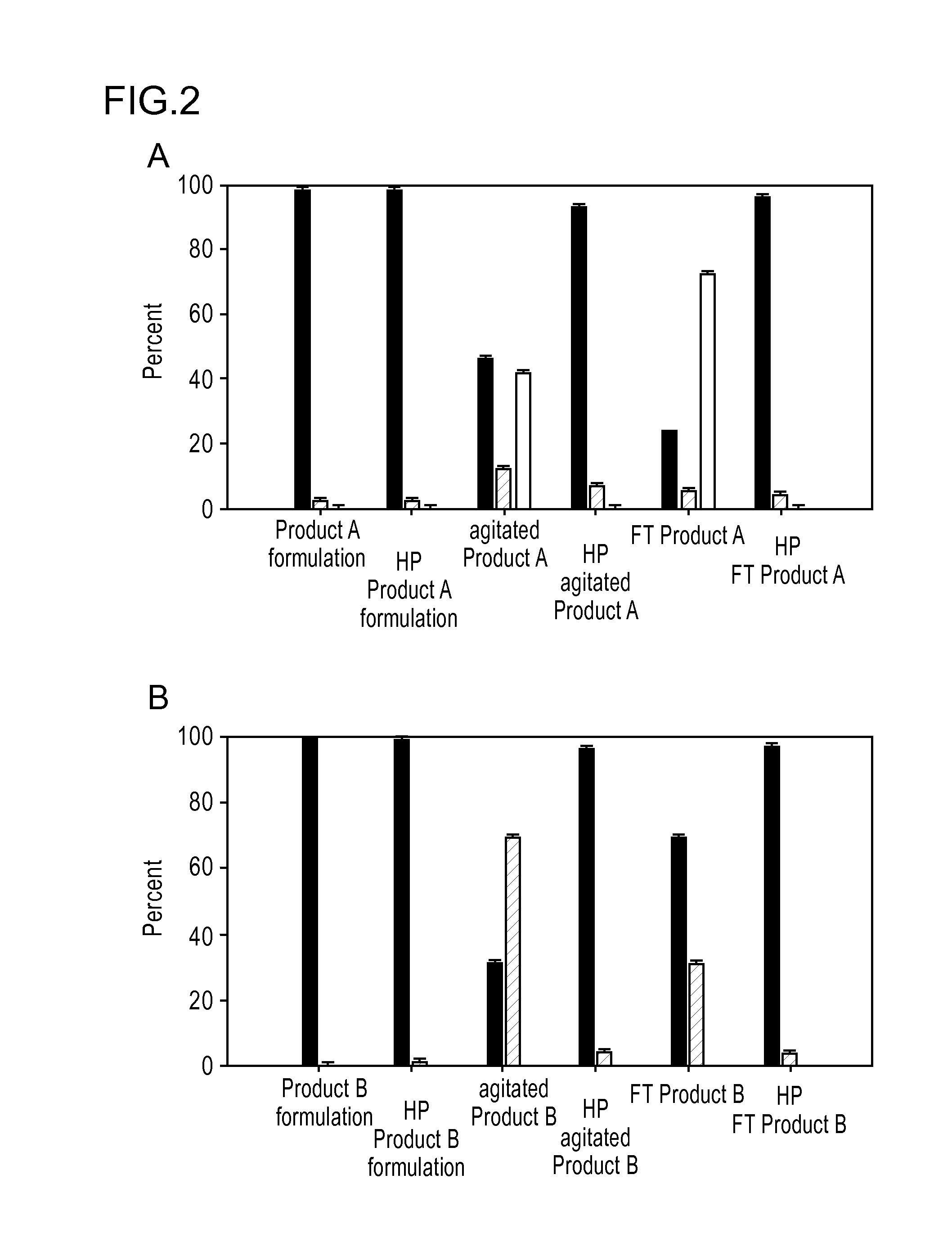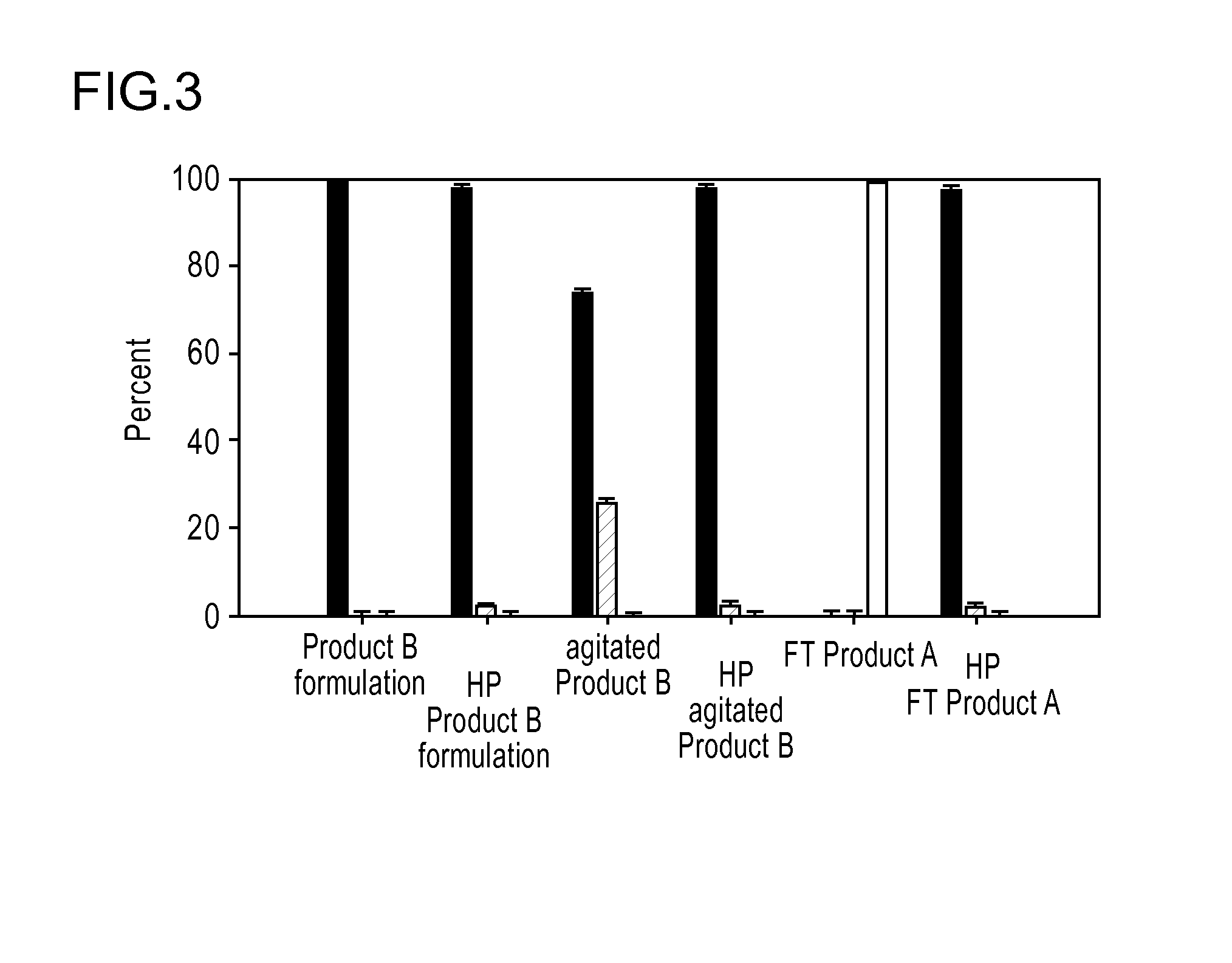Therapeutic protein compositions having reduced immunogenicity and/or improved efficacy
a technology of immunogenicity and protein composition, which is applied in the direction of immunoglobulins, peptides, drug compositions against animals/humans, etc., can solve the problems of compromising the safety and effectiveness of products, affecting the immunogenicity of therapeutic proteins, etc., to achieve low immunogenic potential, reduce and/or evaluate the immunogenic potential of therapeutic proteins, and improve the effect of efficacy
- Summary
- Abstract
- Description
- Claims
- Application Information
AI Technical Summary
Benefits of technology
Problems solved by technology
Method used
Image
Examples
example 1
Immunogenicity of Aggregates of Recombinant Human Growth Hormone in Mouse Models
Summary
[0130]Aggregation of recombinant therapeutic protein products is a concern due to their potential to induce immune responses. In this example, the immunogenicity of protein aggregates was examined in commercial formulations of recombinant human growth hormone produced by freeze-thawing or agitation, two stresses commonly encountered during manufacturing, shipping and handling of therapeutic protein products. In addition, each preparation was subjected to high-pressure treatment to reduce the size and concentration of aggregates present in the samples. Aggregates existing in a commercial formulation, as well as aggregates induced by freeze-thawing and agitation stresses enhanced immunogenicity in one or more mouse models. The use of high-pressure treatment to reduce size and concentrations of aggregates within recombinant human growth hormone formulations reduced their overall immunogenicity in agr...
example 2
Aggregates of Recombinant Murine Growth Hormone Break Tolerance: A Model for Adverse Immunogenicity of Therapeutic Proteins
[0272]Recombinant therapeutic proteins now comprise front-line clinical treatments for many diseases and disorders. Dozens of therapeutic protein products are approved and marketed and hundreds more are in clinical trials (1). In spite of the clinical efficacy of these products, for many of them a drawback is the risk of adverse immune response (2). Patients that produce neutralizing antibodies as a result of the immune response may experience reduced efficacy of treatment and risk serious complications (3). Furthermore, in some cases the immune response also can neutralize the endogenous counterpart of the therapeutic protein, causing permanent harm or death (4,5). In addition, products of great potential benefit to patients may fail to be approved because of immunogenicity problems arising during clinical trials.
[0273]Although the mechanisms by which therapeut...
example 3
Subvisible Particle Analysis of Betaseron
[0367]The purpose of this example was to examine the presence of subvisible particles in Betaseron, an Interferon Beta-1b formulation manufactured by Bayer.
Materials and Methods
[0368]Betaseron® (Bayer, Lot#AA8004A) was bought from the University of Colorado School of Pharmacy Apothecary. Three vials were reconstituted following the manufacturer's instruction in the provided diluent (0.54% sodium chloride) and analyzed in duplicate by MFI. One syringe of diluent solution was recovered to analyze its particle content.
[0369]Particle analysis was performed using Micro-Flow Imaging™ on a DPA 4100 (Brightwell Technologies, Inc.). 0.2 micron filtered water was flushed through the system prior to sample analysis to obtain a clean baseline. Optimize illumination was performed using Betaseron's diluent solution. Approximately 0.32 ml samples of each preparation were analyzed at a flow rate of 0.1 ml / min through a high magnification flow cell using a co...
PUM
| Property | Measurement | Unit |
|---|---|---|
| size | aaaaa | aaaaa |
| size | aaaaa | aaaaa |
| size | aaaaa | aaaaa |
Abstract
Description
Claims
Application Information
 Login to View More
Login to View More - R&D
- Intellectual Property
- Life Sciences
- Materials
- Tech Scout
- Unparalleled Data Quality
- Higher Quality Content
- 60% Fewer Hallucinations
Browse by: Latest US Patents, China's latest patents, Technical Efficacy Thesaurus, Application Domain, Technology Topic, Popular Technical Reports.
© 2025 PatSnap. All rights reserved.Legal|Privacy policy|Modern Slavery Act Transparency Statement|Sitemap|About US| Contact US: help@patsnap.com



